Pont du Gard Aqueduct
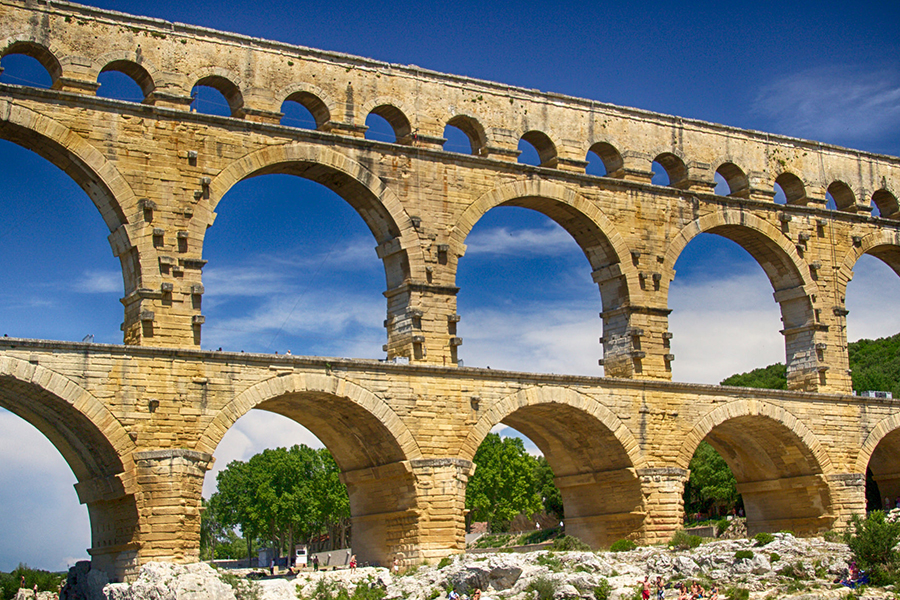
Gard, France
The Pont du Gard, an impressive feat of engineering, stands as a testament to the ingenuity and craftsmanship of the Roman Empire. It is one of the oldest surviving aqueducts, believed to have been built between 19 BCE and 150 CE. Constructed with remarkable precision, the stones of the aqueduct were meticulously carved to fit together perfectly, eliminating the need for mortar to hold the structure in place. This meticulous craftsmanship is evident in the seamless integration of the arches that form three tiers, reaching a towering height of 48.8 meters.
Stretching across a distance of 275 meters, the Pont du Gard served as a conduit for water, providing a vital supply to the city of Nimes in ancient times. Its grandeur and functionality combined make it a marvel that took nearly two centuries to complete. Today, this architectural wonder continues to awe visitors, offering a glimpse into the remarkable engineering prowess of the Roman Empire and its enduring legacy.
Royal Gorge Bridge
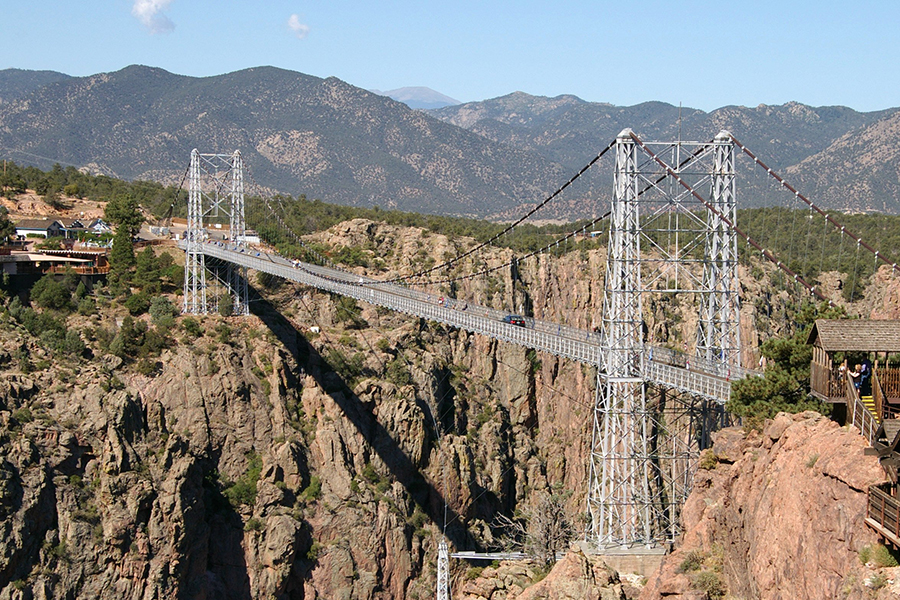
Canon City, Colorado
The Royal Gorge Bridge, renowned as the world's highest suspension bridge, majestically stretches 955 feet above the Arkansas River's base. Its dramatic positioning and stunning design evoke the thrilling atmosphere of iconic scenes from "Indiana Jones and the Temple of Doom". However, the real attraction here is not cinematic nostalgia, but the daredevil parachuters who relish the adrenaline rush of free-falling from this towering structure to the verdant valley below.
Architecturally, the bridge is a marvel with two towering structures scaling up to 150 feet high, supporting its impressive span of 1,260 feet in length. From 1929 until 2001, it held the title of the world's highest bridge - a testament to its remarkable design and construction. Today, it continues to awe visitors with its grandeur and serves as a popular destination for thrill-seekers worldwide.
Sunniberg Bridge
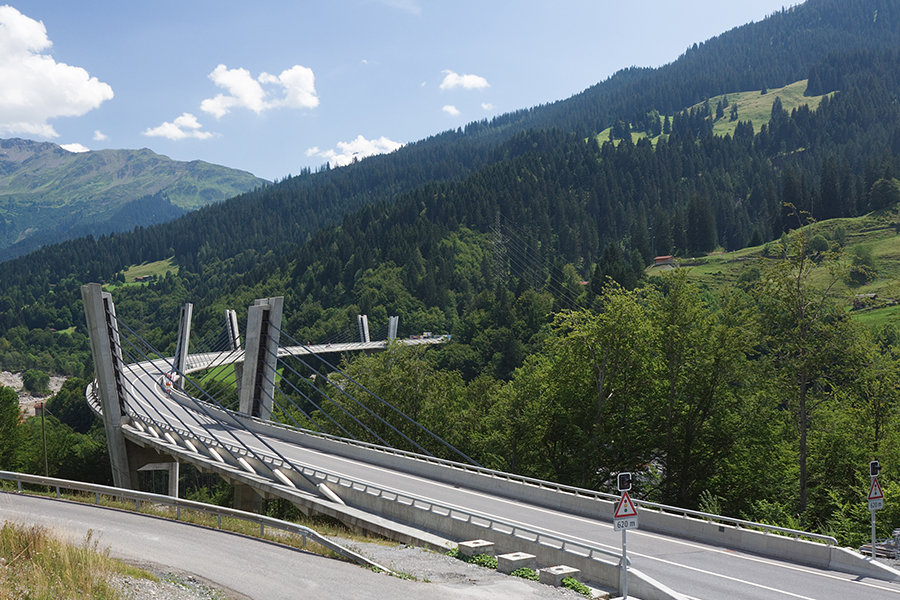
Klosters, Switzerland
The Sunniberg Bridge, winding its way through the breathtaking landscape of the Swiss Alps, is a marvel of modern engineering. Since its completion in 1998, this extradosed bridge has captivated global attention with its unique design and visually striking appearance. Designed by the renowned architect Christian Menn, the bridge features low outward-flaring pylons above the roadway edges, adding a distinct aesthetic appeal to its functional excellence. The bridge spans an impressive 526 meters and rises 60 meters above the valley, providing stunning views of the surrounding scenery.
Notably, the Sunniberg Bridge's innovative design and aesthetic appeal have not gone unnoticed in the world of structural engineering. In 2001, it received the Outstanding Structure Award, cementing its place as an iconic structure in the field of civil engineering. The bridge's longest span measures 140 meters, reflecting the remarkable engineering prowess that went into its construction. Today, the Sunniberg Bridge continues to serve as a vital road link near Klosters in Switzerland, while also standing as a testament to innovative architectural design and engineering ingenuity.
Khaju Bridge
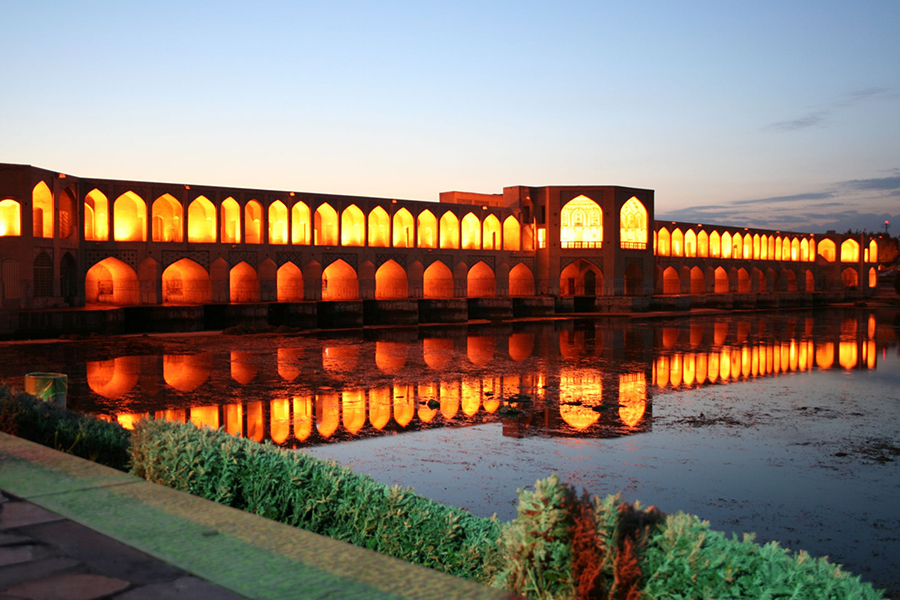
Isfahan, Iran
The Khaju Bridge, a stunning piece of Persian architecture, serves dual purposes with an elegance that is both functional and aesthetically pleasing. This historic bridge does not merely facilitate the passage of travelers across the Zayandeh River. It also ingeniously regulates the river's flow, a testament to the remarkable engineering acumen of its builders. Constructed in 1650 on the remnants of an older bridge, it offers a captivating blend of history and architectural splendor.
Stretching 133 meters in length, the bridge is adorned with 23 beautifully crafted arches, each contributing to its distinctive charm. The Khaju Bridge is not just a crossing; it is a destination in itself for history enthusiasts and romantics alike. Its enchanting atmosphere, combined with the historical significance, makes it a favorite spot for leisurely strolls, where one can immerse oneself in the echoes of a bygone era.
Golden Gate Bridge
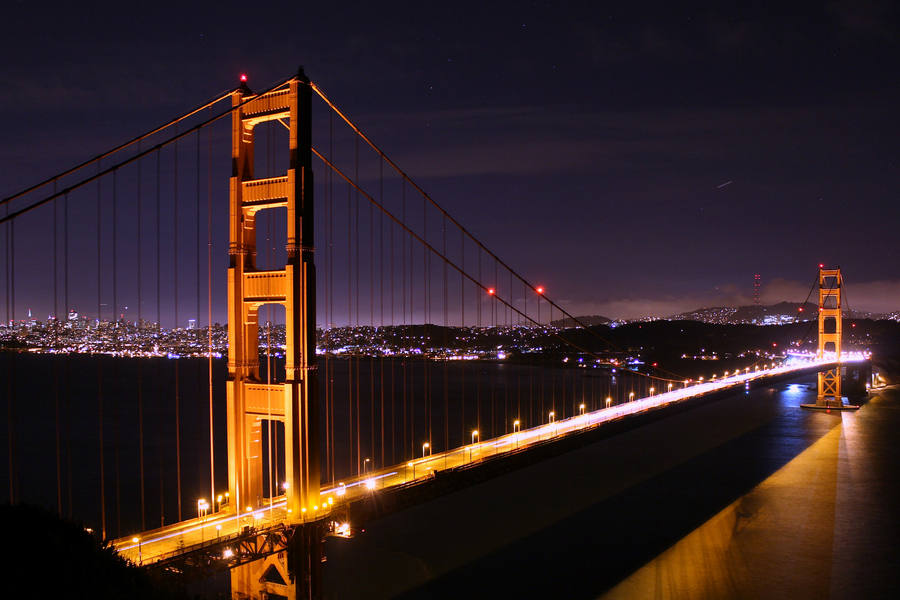
San Francisco, California
The Golden Gate Bridge, undoubtedly the most recognizable bridge in the United States, is a marvel of modern engineering. From its completion in 1937 until 1964, it held the prestigious title of being the longest suspension bridge in the world. The bridge spans a staggering 2,737.1 meters, serving as a vital connection between San Francisco and Marin County.
The bridge's distinctive red paint, officially known as 'International Orange', not only captures human attention but also seamlessly blends with the San Francisco skyline, enhancing its aesthetic appeal. This iconic hue was chosen to enhance the bridge's visibility in foggy conditions and complement the natural surroundings. Today, the Golden Gate Bridge stands as a testament to human ingenuity and a symbol of the city it graces.
Ponte Vecchio
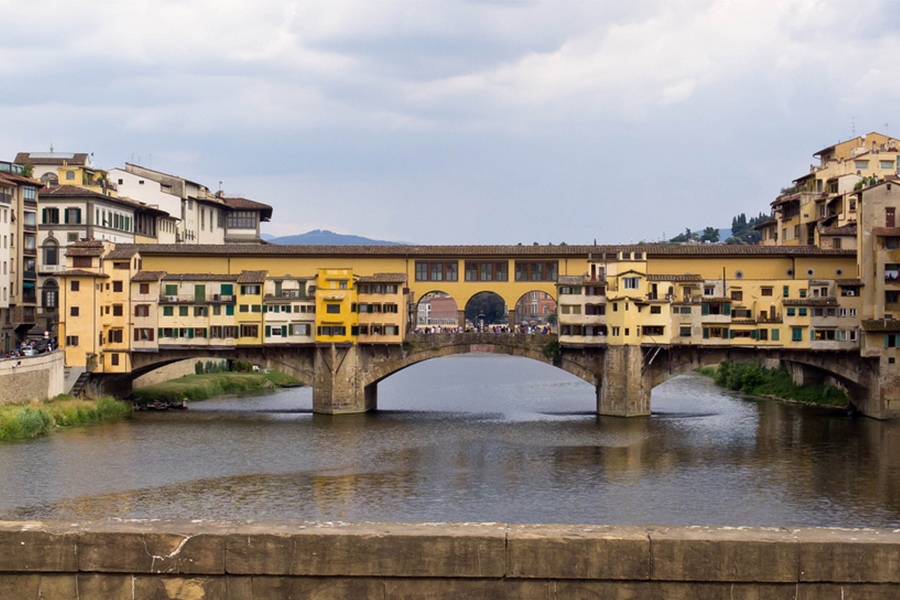
Florence, Italy
When it comes to art and architecture, few can rival the Italians. This is exemplified by the Ponte Vecchio, a medieval bridge that stretches across the Arno River. Home to a myriad of unique shops and art dealers, the bridge is a bustling hub of culture and commerce. It's not just an architectural marvel, but also a living, breathing testament to Italy's rich artistic heritage. Notably, the Ponte Vecchio is Europe's oldest stone, closed-spandrel segmental arch bridge, its origins tracing back as far as the 12th century.
Despite being rebuilt several times throughout history, the current structure of the Ponte Vecchio, which stands about 90 meters in length, has remained unchanged since its final reconstruction in 1345. Its enduring presence over the centuries is a tribute to the timeless appeal and resilience of Italian architecture. Today, the Ponte Vecchio continues to captivate locals and tourists alike with its charming blend of history, art, and commerce.
Akashi Kaikyo Bridge
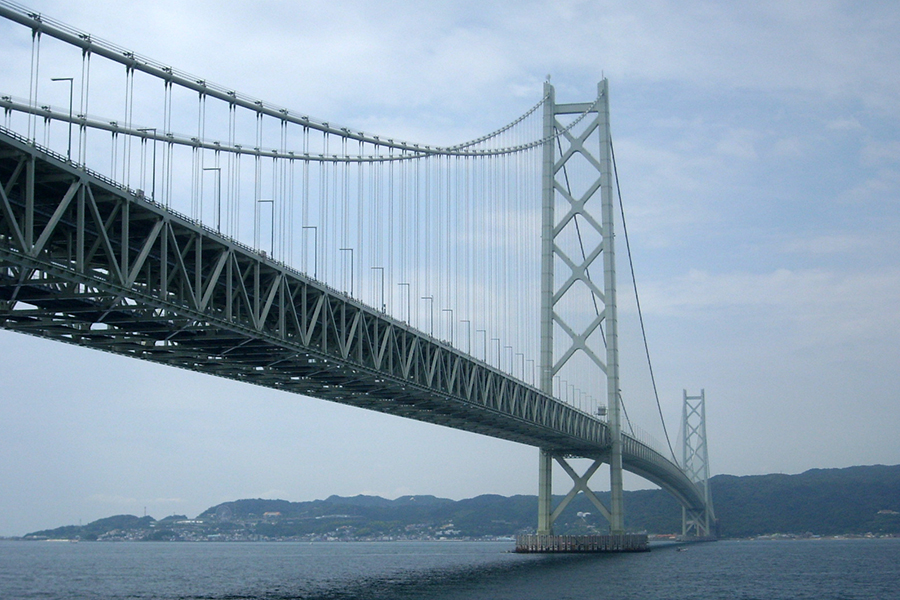
Kobe-Naruto, Japan
The "Pearl Bridge," formally known as the Akashi Kaikyo Bridge, is a testament to human engineering and resilience. Stretching 1.2 miles across the Akashi Strait that separates Kobe from Iwaya, this architectural marvel holds the title of the world's longest suspension bridge, according to sources including CNN and HowStuffWorks. It's not just its length that's impressive, but also its durability and robust design.
Even before its completion, the Pearl Bridge demonstrated its superior strength during the devastating Kobe Earthquake in 1995. Despite the powerful seismic forces, the bridge held firm, showcasing its flawless design and the exceptional skills of its builders. Today, the Akashi Kaikyo Bridge stands as a symbol of resilience, defying natural calamities to connect people and places.
Tower Bridge
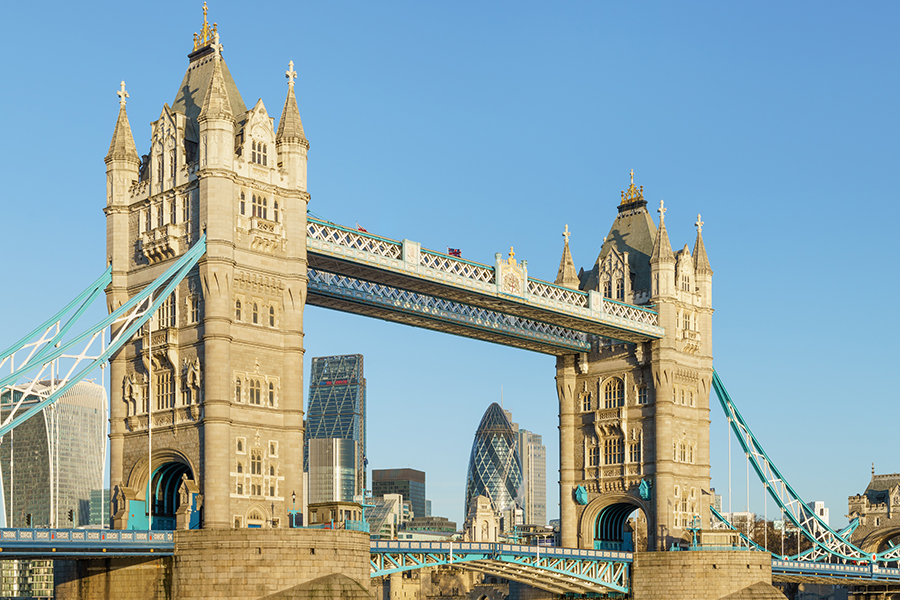
London, England
As iconic as the River Thames, Tower Bridge is undeniably one of London's most photographed and cherished landmarks. Completed in 1894, this European gem, with its stunning turrets and imposing structure, seems to have leapt straight out of a fairy tale. The bridge is not just a symbol of London, but also a testament to British engineering prowess.
Tower Bridge is unique for being a combined bascule and suspension bridge, a design that lends it both strength and sustainability. This innovative structure ensures the bridge can withstand the test of time. Spanning a length of 244 meters, it stands as a majestic link between the two banks of the Thames, an enduring emblem of London's rich history and architectural grandeur.
Millau Viaduct

Tarn Valley, France
The Millau Viaduct, a marvel of modern engineering, etched its name in history by setting two world records upon its completion in 2004. It boasts the world's highest pylons and the tallest bridge tower, making it an awe-inspiring sight to behold. The grandeur of the bridge is not just about its towering height, but also about the ingenuity and precision that went into its construction.
In addition to these records, the Millau Viaduct also holds the title for the highest road bridge deck in Europe, adding a thrilling element to the experience of crossing this landmark. With a total roadway length of 2,460 meters and the tallest pylon standing at 336.4 meters, the bridge is a testament to human creativity and ambition. Interestingly, unlike many bridges, the Millau Viaduct stretches over land instead of water, further making it a unique architectural wonder in the world of bridges.
Python Bridge

Eastern Docklands, Amsterdam
The Python Bridge, officially named the High Bridge, is a distinctive landmark in Amsterdam. With its serpentine form, it slithers across the canal, forming a connection between Sporenburg and Borneo Island in the Eastern Docklands. Its unique design, which some may argue leans more towards the whimsical than practical, certainly makes it a standout feature in the city's landscape.
The bridge, completed in 2001, spans a length of 90 meters. While it is indeed an architectural marvel, it does present a slight challenge for cyclists due to its stairs and ramp. Cyclists have to push their bikes up a ramp to cross, adding a quirky twist to the otherwise routine act of crossing a bridge. Despite this, the Python Bridge remains a popular attraction, a testament to Amsterdam's blend of traditional charm and modern creativity.
Gateshead Millennium Bridge
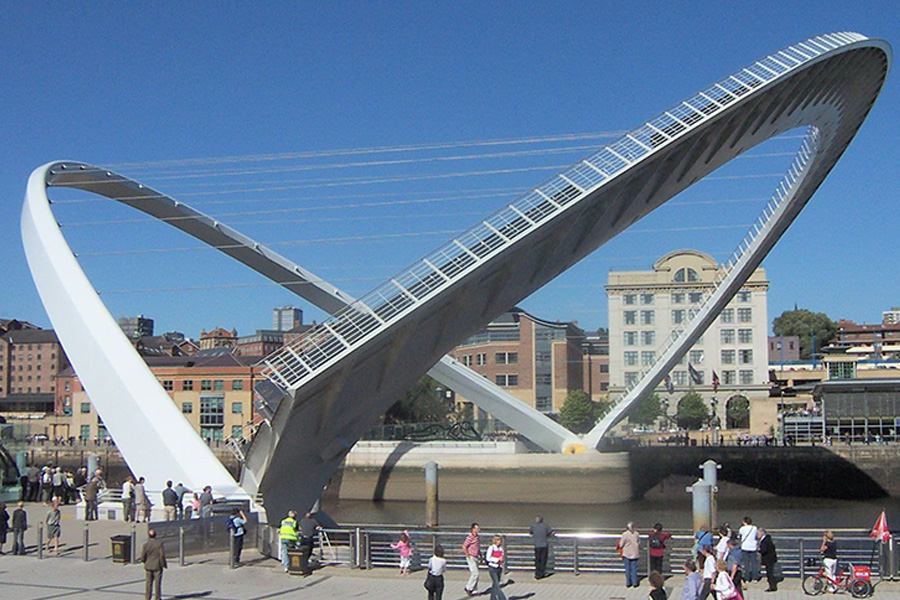
Newcastle, UK
The Gateshead Millennium Bridge in Newcastle is an architectural marvel known for its unique tilt mechanism, a feature that sets it apart from conventional bridge designs. This remarkable structure tilts upward into a visually stunning position to provide a clear passage for large ships navigating the River Tyne. The spectacle of this transformation attracts both locals and tourists, making it more than just a crossing point but a symbol of innovative engineering.
The unusual arc shape of the roadway may initially seem peculiar to some. However, when the bridge is tilted, this design proves to be incredibly functional, allowing tall ships to slide under effortlessly. Once the vessels have passed, the bridge's pavement on the right side descends back into place, seamlessly reconnecting with the roadway. The Gateshead Millennium Bridge, thus, exemplifies a harmonious blend of aesthetics and functionality, embodying the spirit of modern architecture.
Lucky Knot Bridge
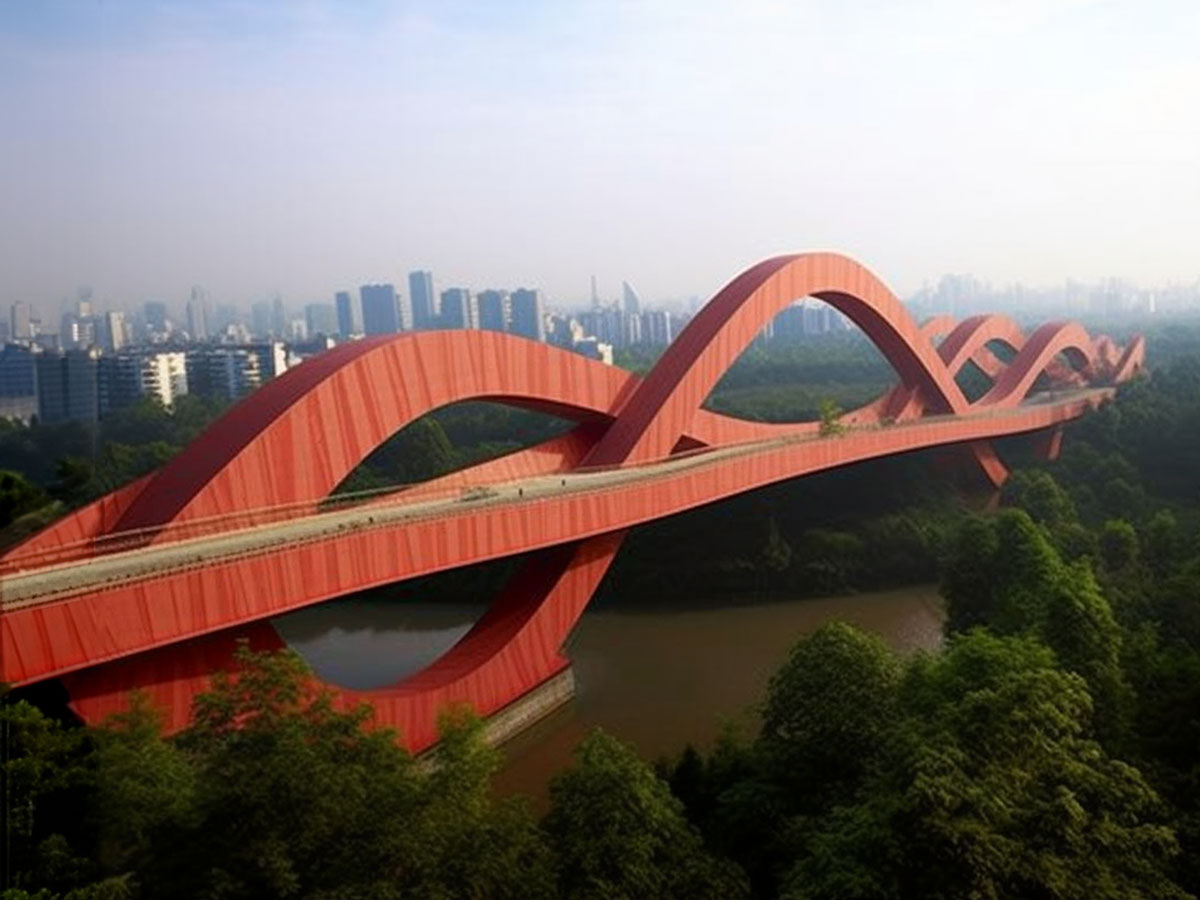
Changsha, China
Practically speaking, the Lucky Knot Bridge in Changsha, China, is just a bridge, but we wouldn't fault you for taking one look at it and assuming it's a rollercoaster! This bright-red tangle of walking pathways looks completely unique and spectacular as it helps move people across the Dragon King Harbor River.
The Lucky Knot Bridge was originally designed for an architectural competition in 2013, and it was finally completed and ready for human use in 2016. The architects for the bridge were inspired both by the twisting loops of a Mobius strip as well as the traditional Chinese art of knotting known as zhongguo jie.
Twin Sails Bridge

Dorset, England
Credit where credit is due—the Twin Sails Bridge, found on the southern coast of England has a design like no other bridge we've seen. However, as spectacular as this architectural marvel may look, it's had a pretty troubled history since it opened to the public in 2012.
Construction on the bridge wasn't ready by the time of its opening ceremony, and while it did finally open later in the year, it was plagued by problems. From 2018 through 2020, the bridge was closed entirely due to technical issues. And then, once again, in early 2023, a piece of the bridge actually snapped off! This is definitely one to just appreciate from a distance!
Eshima Ohashi Bridge
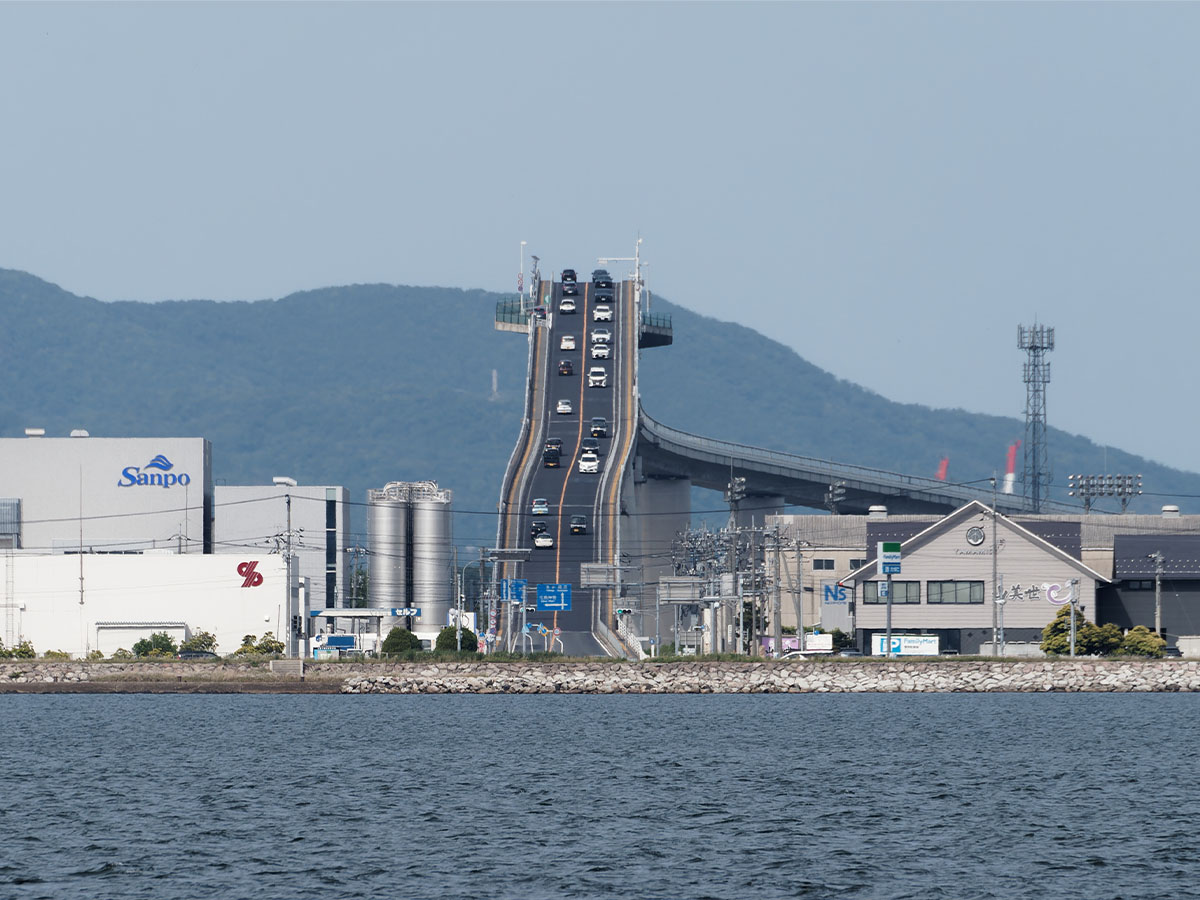
Shimane, Japan
The Eshima Ohashi Bridge connects two prefectures in Japan and crosses Nakaumi lake. From some angles, this bridge looks pretty average and less-than-spectacular; however, once you see the crazy incline on this thing, you'll immediately understand why this thing has been nicknamed "Rollercoaster Bridge."
While the bridge does rise and fall at a pretty dramatic angle in order to let ships pass beneath, many of the photos taken of it are done at an angle that makes the bridge's incline look more ridiculous than it actually is. From certain angles, the bridge looks like it raises up at 45 degrees, but in reality, it never surpasses a 3.5-degree incline.
Dragon Bridge

Da Nang, Vietnam
Countless cars pass over the Han River in Da Nang, Vietnam every day, and, if you're lucky, you get to do it in style on the breathtaking Dragon Bridge. Construction on the bridge began in 2009, and it was officially opened to the public in 2013 to coincide with the anniversary of North Vietnam's capture of Da Nang during the Vietnam War.
While there are several dragon-shaped bridges around the world, none are larger than the one in Da Nang, which comes in at six lanes and a devilish 666 meters in length. There are also weekly shows where the dragon "breathes fire" at night, aided by more than 2500 LED lights attached to the bridge.
Lego Bridge
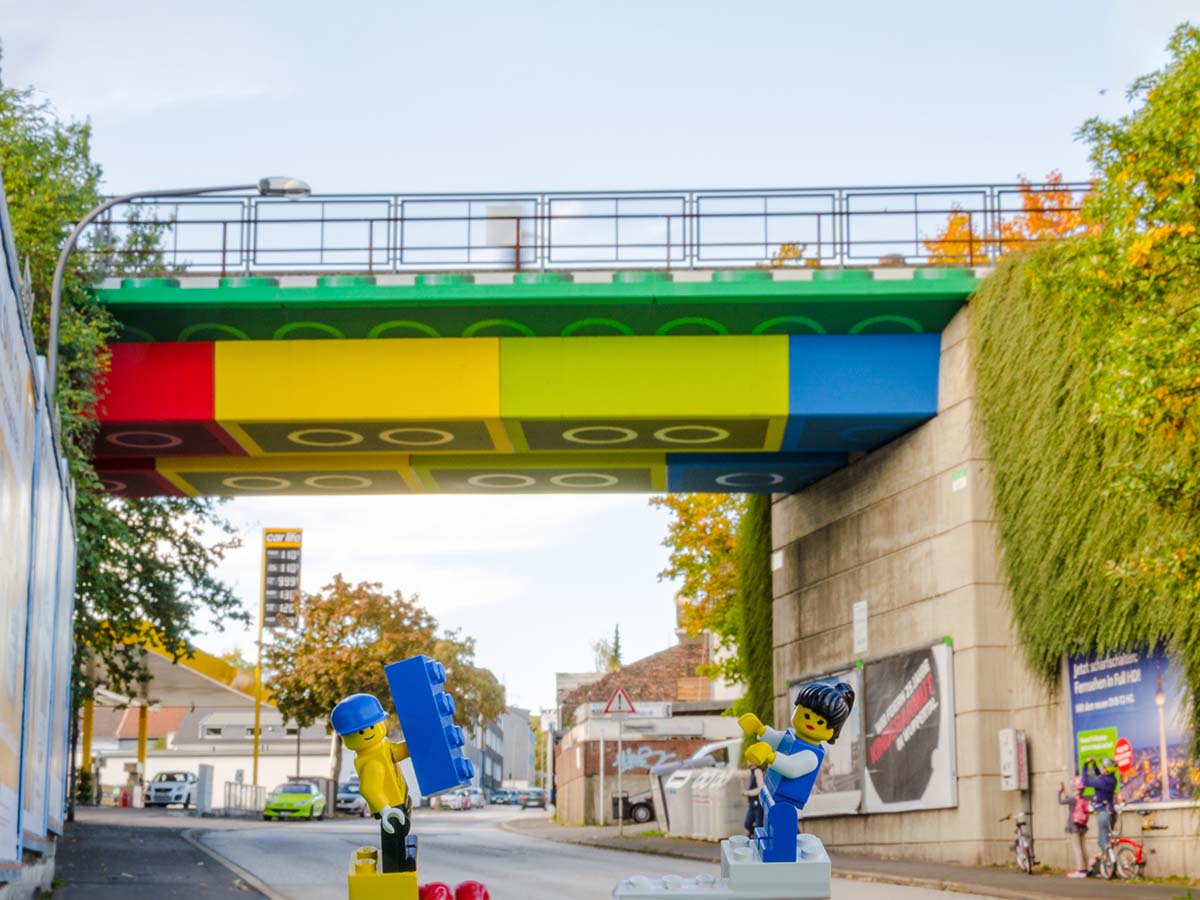
Wuppertal, Germany
Legos may be a great toy for young, budding architects, but we would be reluctant to actually cross a bridge made of them! Thankfully, the citizens in Wuppertal, Germany, managed to get the best of both worlds after a rather traditional bridge there was painted to look like Lego bricks.
The bridge, known as Lego-Brücke to German speakers, is a simple cement bridge that got an amazing makeover by artist Martin Heuwold in 2011. Unlike some of these bridge projects, which span years, the paint job was finished in less than two weeks. It just goes to show that sometimes all you need is a little paint and creativity!
Laguna Garzon Bridge
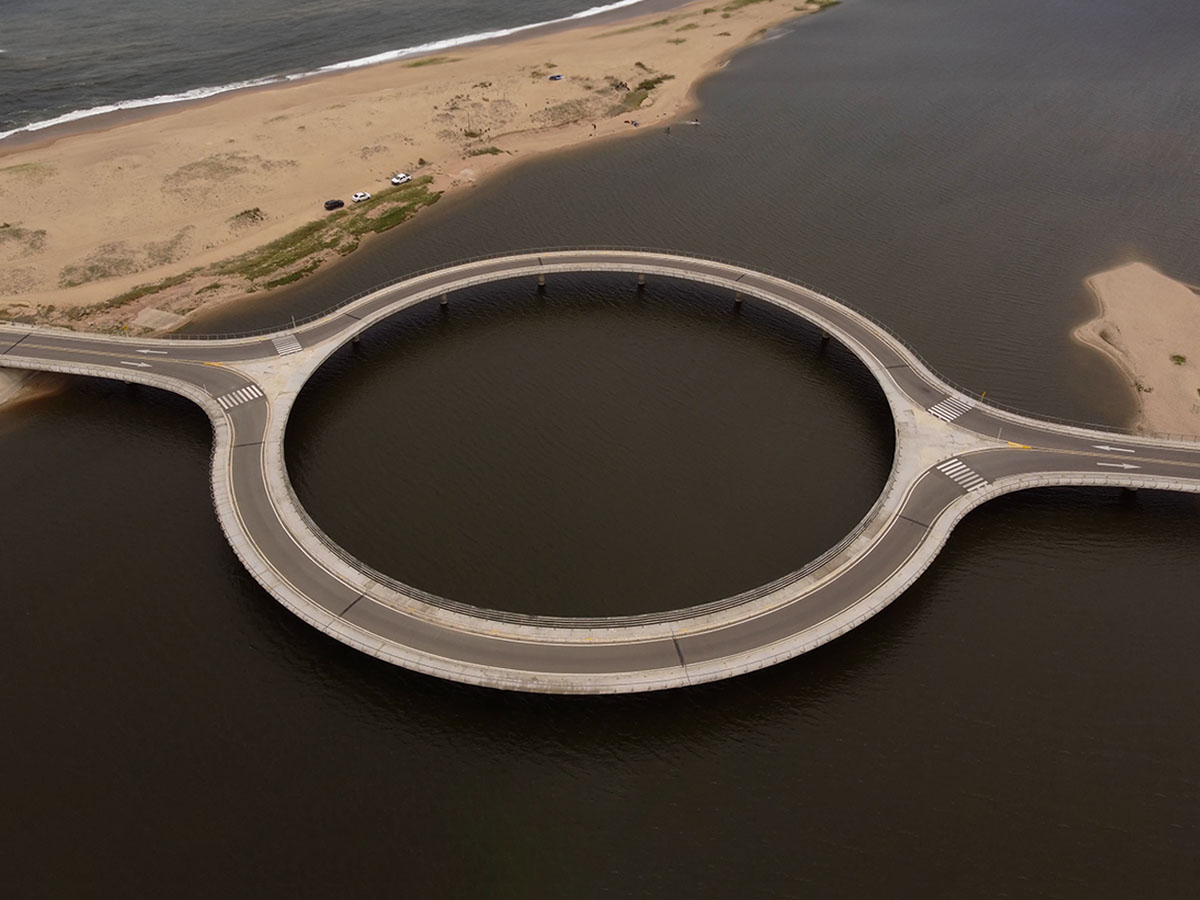
Laguna Garzon, Uruguay
Sometimes the simplest solution is best, but apparently, the architects of the Laguna Garzon Bridge would disagree! Why go with a boring straight line when you can install a giant loop instead? As ridiculous as this design might look at first glance, the creator actually had a pretty good reason for designing this like he did.
The giant loop shape was to force drivers to slow down as they crossed the bay, which helps them from plowing over the edge and into the water and keeps the pedestrians who also use the bridge safer. While the design might look a little ridiculous, it's much better than how people used to cross—on a ferry that can only hold two vehicles and only operates during the day.
The Elastic Perspective
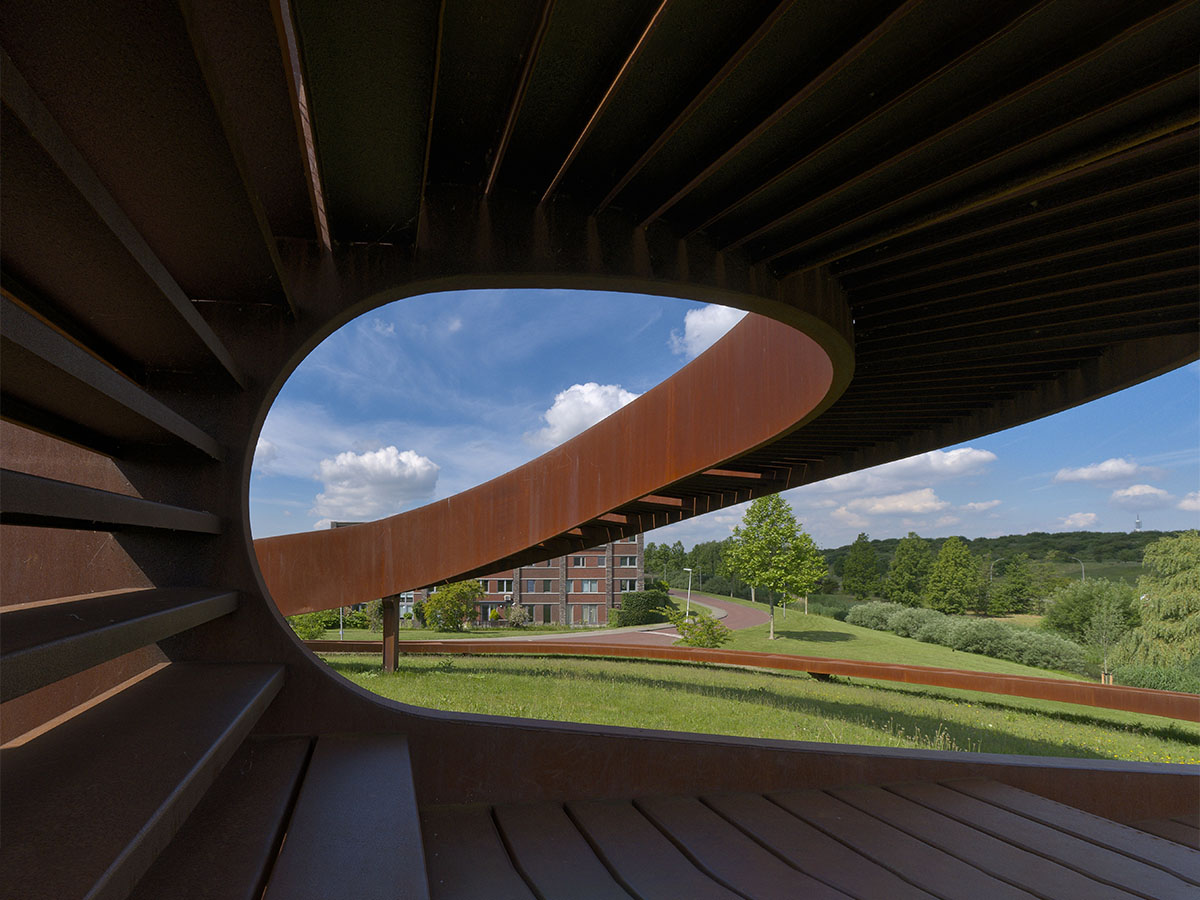
Carnisselande, Netherlands
If you're interested in taking a bridge to nowhere, you can't do much better than the Elastic Perspective in the Netherlands. While this structure can support pedestrian traffic, this is actually more of an art installation than a functional, everyday bridge. However, at the top, it does offer quite a breathtaking view of nearby Rotterdam.
According to the creators of this structure, it's supposed to represent the conflicting relationship between the citizens of Carnisselande (a suburb of Rotterdam) and the city proper. We're not sure we picked up any of that, but it's definitely one of the more beautiful (if not useless) bridges in the world!
Yongle Bridge
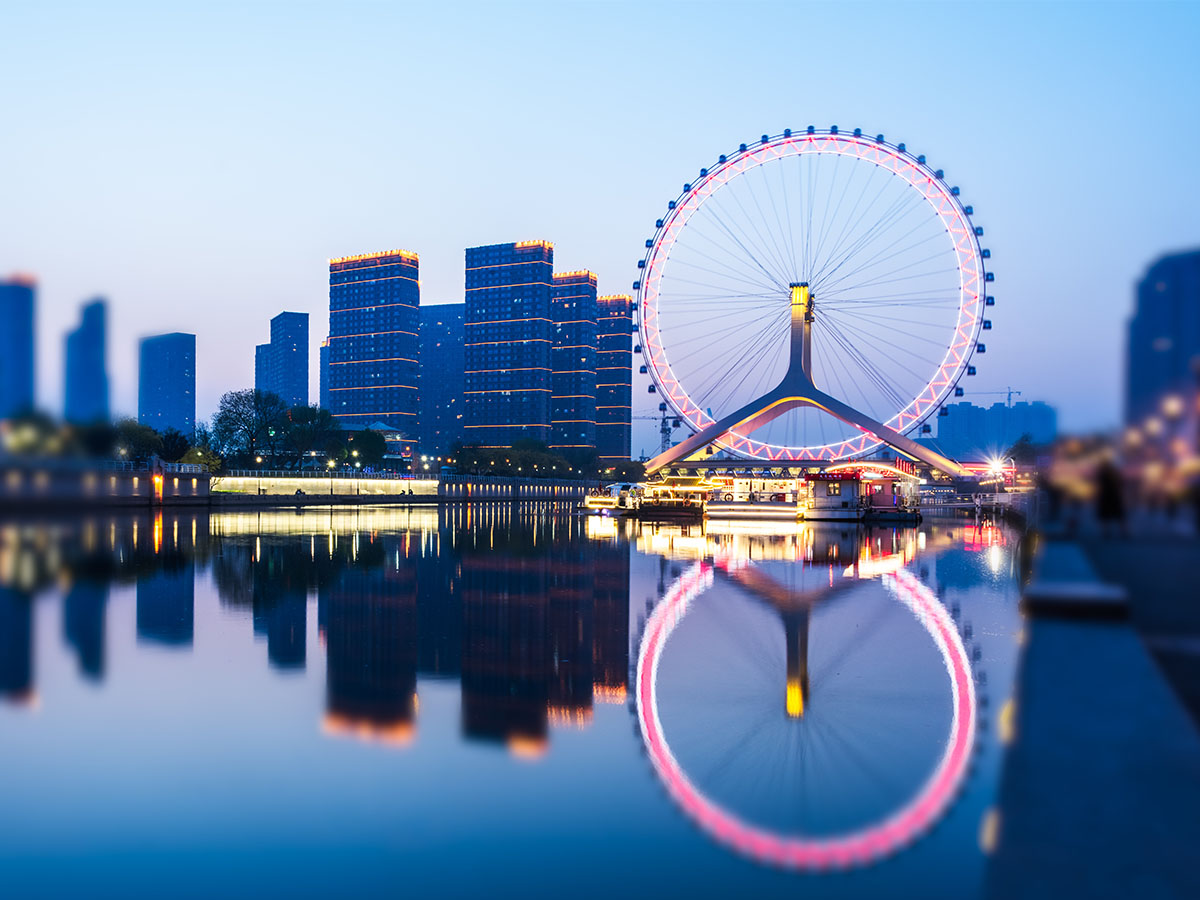
Tianjin, China
The Yongle Bridge itself (which crosses the Hai River in Tianjin) is actually a pretty standard-looking bridge. What really gets people's attention is the giant thing attached to the top of it—the Tianjin Eye. This massive Ferris wheel is the third largest in the world and has a giant capacity of almost 800 passengers per hour.
The public is free to take a ride on this humongous Ferris wheel, but you'll want to carve out a good chunk of time for it—a single rotation of the wheel takes 30 minutes to complete! According to most visitors, the best time to go and experience the Tianjin Eye is after nightfall when it's all lit up for the world to see.
Slauerhoffbrug
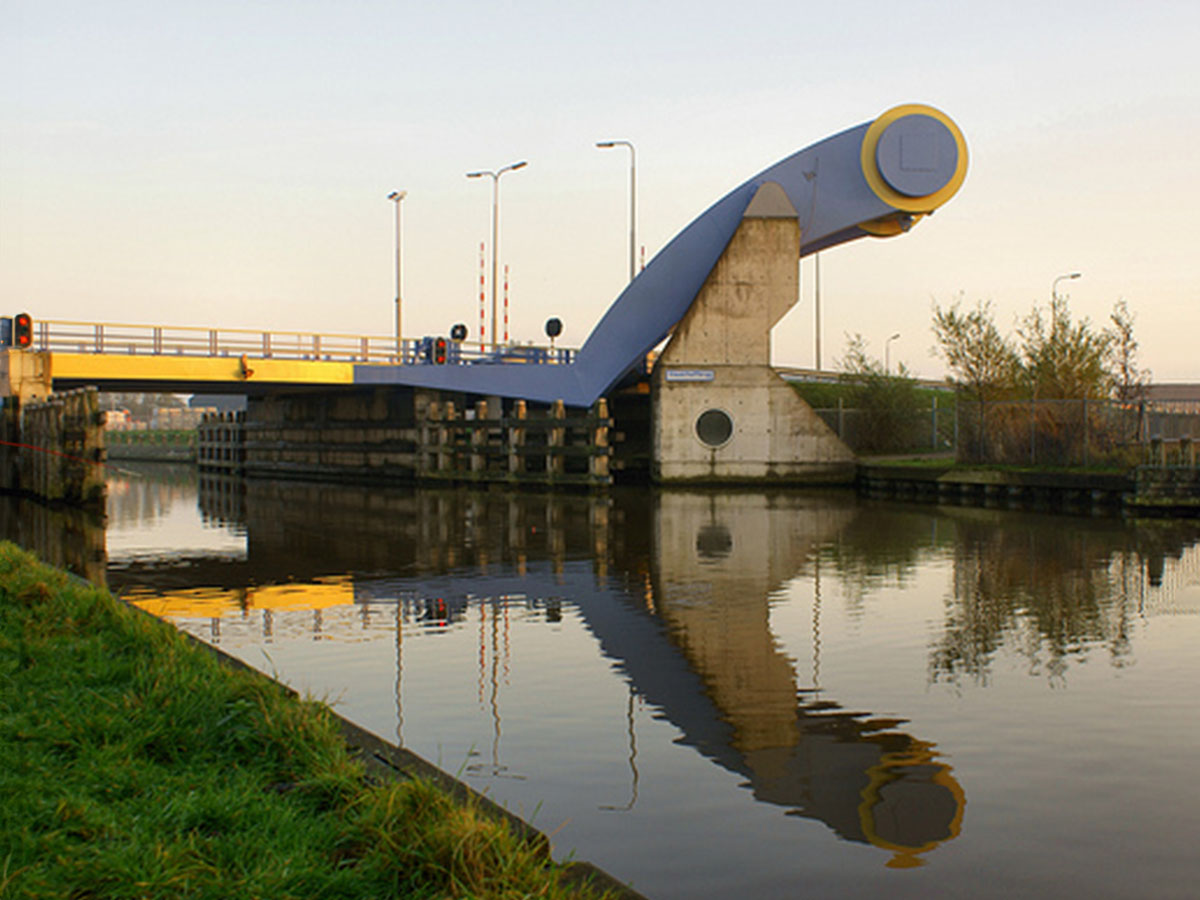
Leeuwarden, Netherlands
While your average drawbridge is still an architectural marvel, they don't have anything on the Slauerhoffbrug in the Netherlands. This unique drawbridge doesn't function like most of them—instead of the bridge splitting in two to allow ships to pass, Slauerhoffbrug uses two giant arms to remove a chunk of the bridge.
While cars still have to wait for boats to safely pass, the unique design of this bridge means that interruptions for motorists are actually much shorter than with your average drawbridge. You might also hear some locals refer to it as the "Frog Bridge" because of its froggy shape when the bridge is in the down position.
Living Root Bridge

Meghalaya, India
If you know where to travel in India, you might come across one of the most beautiful marvels in the natural world—living root bridges. While humans might be pretty good architects, these wonders prove that Mother Nature is pretty good at designing bridges herself! These are frequently found in the Meghalaya region.
While living root bridges are made from the roots of rubber fig trees, they do need a little human intervention, which involves pruning the roots and manipulating the direction of root growth. When done correctly, these natural bridges can support up to fifty people and last for hundreds of years!
Brave Men's Bridge

Hunan Province, China
The Brave Men's Bridge, or Haohan Qiao in Chinese, has recently been unveiled in China's Shiniuzhai National Geological Park. This architectural marvel holds the title of being the world's longest and tallest glass-bottom bridge. Adventurous visitors who dare to step onto the transparent platform are treated to an exhilarating, unobstructed view 590 feet above the canyon floor. The bridge spans nearly 300 meters in length, offering a truly unique perspective of the breathtaking geological park.
However, two weeks after its grand opening, cracks began to manifest in the glass. These unexpected defects have raised concerns about the bridge's safety and caused quite a stir among the public. The news of the crack spread rapidly, causing panic among tourists and locals alike. The bridge was swiftly closed for necessary repairs, leaving many to question the durability and safety of such ambitious architectural endeavors.
Rolling Bridge

London, UK
The Rolling Bridge, nestled in the heart of London, is a testament to innovative engineering and imaginative design. Completed in 2004 as part of the Grand Union Canal office and retail development project, this distinctive bridge has an uncanny ability to curl and straighten, akin to scenes from an animated cartoon or a Harry Potter movie. The sight of it unfurling across the canal is nothing short of spectacular, lending an air of magic and whimsy to its surroundings.
The bridge's unique mechanism relies on eight triangular sections that collapse and extend through hydraulic cylinders mounted vertically between the sections. This unusual yet ingenious design allows the bridge to transform from a conventional walkway into a compact circular shape. Despite its peculiar appearance when curled up, the Rolling Bridge serves a crucial purpose, providing an essential access route across the canal. Its blend of functionality and novelty makes it not just a bridge, but a kinetic sculpture, a piece of art that is both intriguing and practical.
Sundial Bridge
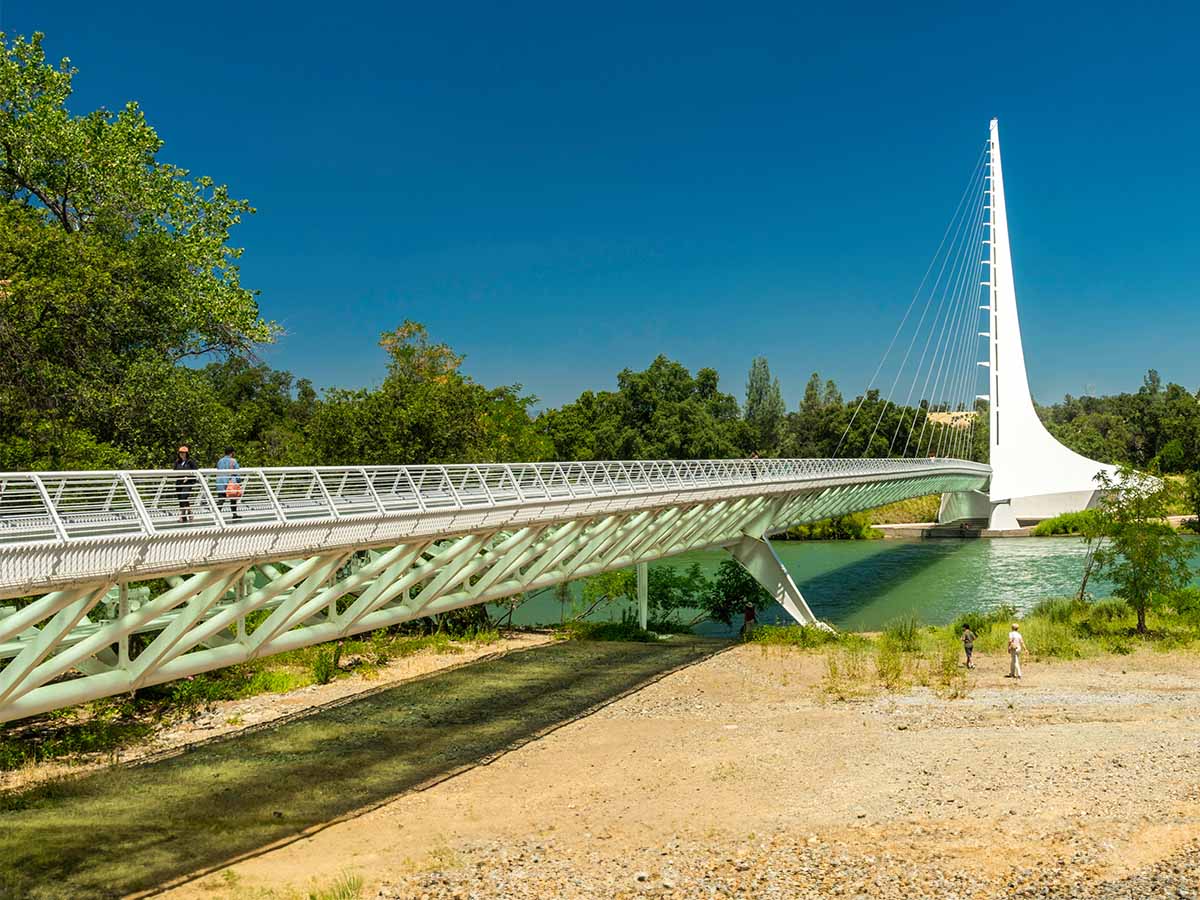
Redding, California
The Sundial Bridge, a striking structure in Redding, California, gracefully spans the Sacramento River. This cantilever spar cable-stayed bridge has been thoughtfully designed to accommodate bicyclists and pedestrians, promoting sustainable transport while offering breathtaking views of the river. The bridge's most unique feature is its support tower, which doubles as a giant sundial, standing tall at 217 feet.
Completed in 2004 at an estimated cost of $23.5 million, the Sundial Bridge has since become an iconic landmark in Redding. Its distinctive design and functionality have made it a must-visit spot for locals and tourists alike. The grandeur of the bridge is hard to ignore - its massive sundial, the sleek lines of its construction, and its stunning location all contribute to its unmissable presence. Truly, it is not just a bridge, but a testament to human ingenuity and the power of innovative design.
Pont Gustave-Flaubert
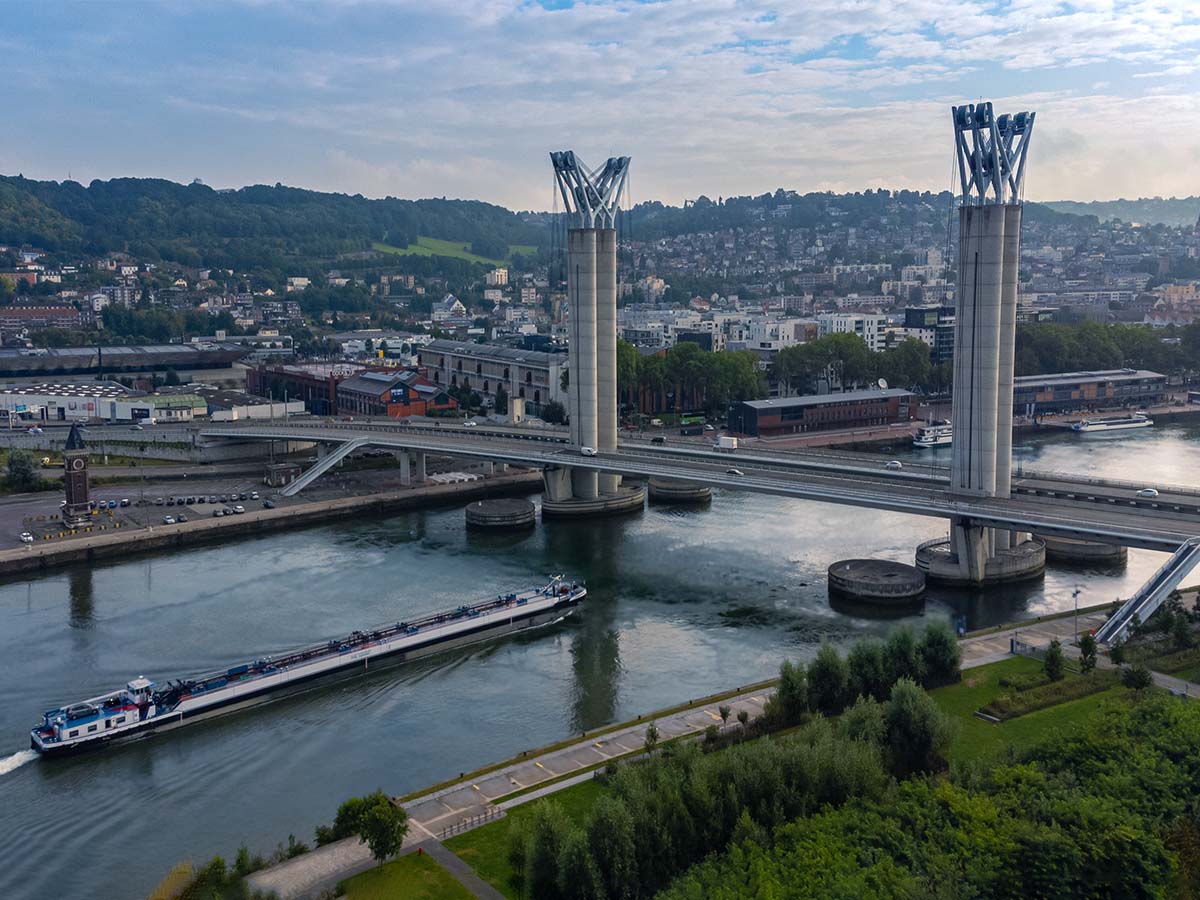
Normandy, France
The Pont Gustave-Flaubert bridge, an engineering marvel straddling the River Seine in Normandy, France, is a unique blend of a bridge and an elevator. This vertical-lift bridge stands as a testament to innovative design and advanced engineering techniques. It boasts two towering pylons that facilitate the raising and lowering of the bridge, enabling smooth passage for vessels navigating the river.
Constructed over a span of four years and completed in 2008, the Pont Gustave-Flaubert has since become a significant landmark in the region. With its high-rise towers reaching an impressive height of 86 meters, it holds the distinction of being the highest-lifting bridge in Europe. This remarkable structure not only serves a practical purpose but also adds a distinctive architectural element to the cityscape of Rouen.
Chengyang Bridge
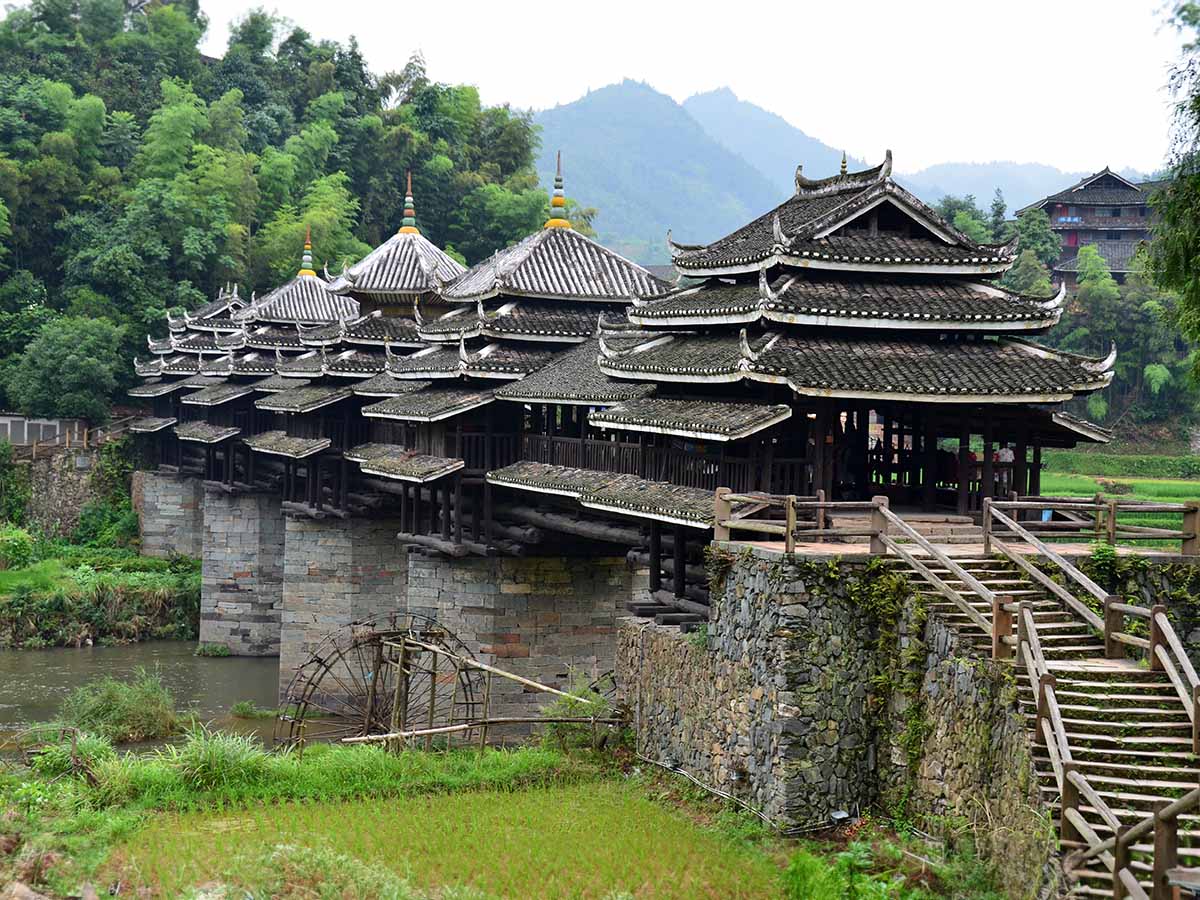
Liuzhou, China
The Chengyang Bridge, also known as the Wind and Rain Bridge, is a stunning piece of architecture nestled in China's Guangxi region. It is far more than just a bridge – it's a grandiose amalgamation of verandas, corridors, and pavilions that together create a breathtaking sight. The bridge's piers are meticulously crafted from stone, while the upper structures are made of wood, showcasing a harmonious blend of natural materials.
Constructed in 1912, the bridge stands as an exquisite example of Dong architecture, with its intricate woodwork and distinctive tile-covered roofs. The Chengyang Bridge is not just a passageway over the Linxi River, but a symbol of cultural heritage and architectural prowess. Its captivating beauty and fascinating design truly make it a marvel to behold. Each detail, from the stone piers to the wooden pavilions, tells a story of craftsmanship and tradition, making the bridge both a functional structure and a cherished historical monument.
Pira Delal
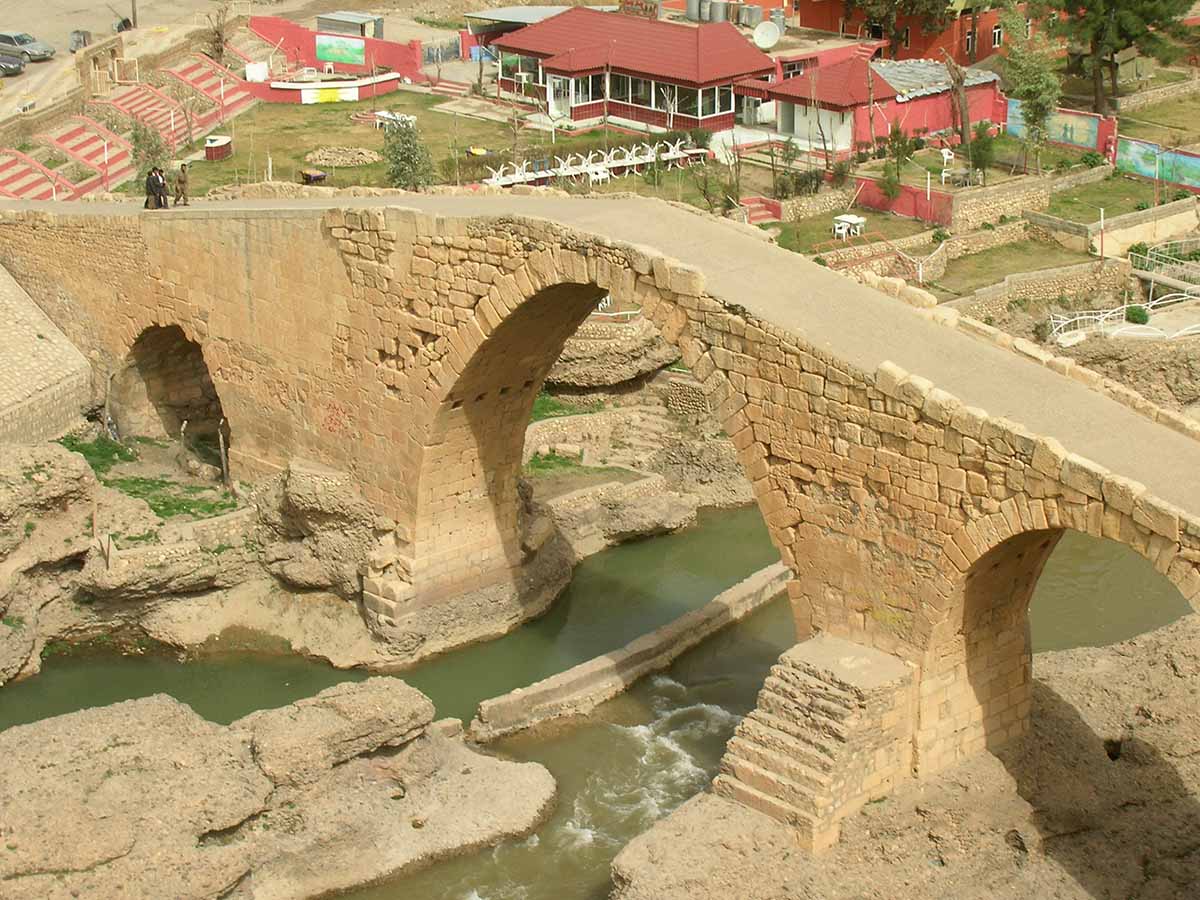
Zakho, Iraq
The Pira Delal bridge, also known as Zakho Bridge or Pirdí Delal, is an enigmatic structure that gracefully spans the Khabur River in the town of Zakho, Iraq. This ancient stone bridge, whose origins remain shrouded in mystery, is a testament to the architectural prowess of a bygone era. Some theories suggest it may date back to Roman times, underscoring its historical significance and ancient roots.
Measuring 115 meters in length, the Pira Delal is not just a bridge; it's a symbol of endurance and timelessness. Its enduring presence over centuries, despite the absence of concrete data on its origins or exact age, makes it a fascinating monument. This imposing structure, with its ancient stones weathered by time, stands as a silent witness to the passage of time and the flow of the Khabur River beneath it.
Anping Bridge

Quanzhou, China
The unassuming yet impressive longevity of this bridge is a testament to the skilled craftsmanship of the Song Dynasty. Constructed in 1151, the bridge was built using granite beams that span the expanse of what was once the Shijing River. Despite the passage of nearly a millennium, it stands firm and unyielding, a silent testament to the architectural ingenuity of ancient China.
The bridge's stone piers have withstood the test of time, weathering centuries of use and environmental changes with remarkable resilience. Recognizing its historical and cultural value, the National Cultural Heritage Administration has designated it as a protected historic site. This protective status ensures that future generations can appreciate this ancient marvel of engineering, providing a tangible link to the past and a source of inspiration for the future.
Helix Bridge

Marina Bay, Singapore
The Helix Bridge, an architectural marvel in Singapore, stretches across 280 meters of the Marina Bay. This striking structure is meticulously crafted from specialized stainless steel, embodying a perfect blend of aesthetic beauty and structural integrity. Construction of the Helix Bridge was a two-year process marked by remarkable precision and care. This dedication to craftsmanship resulted in a bridge that is as sturdy as it is visually stunning.
Completed in 2010, the bridge is characterized by its distinctive helix-shaped canopies. These not only add to the bridge's unique design but also serve a functional purpose, providing much-needed shade for pedestrians crossing the expansive Marina Bay. The Helix Bridge is more than just a means to cross water – it's a testament to innovative design and careful construction, making it a landmark in its own right.
Henderson Waves
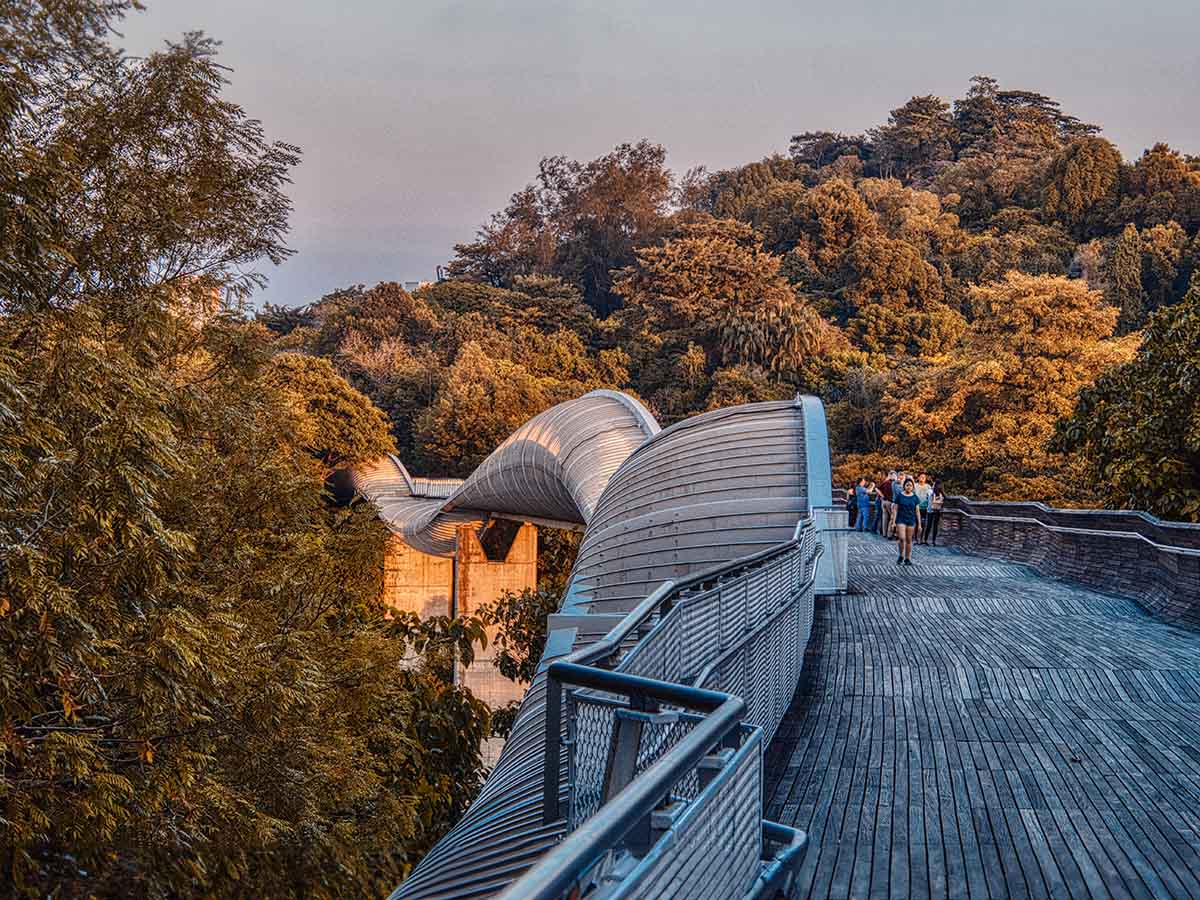
Henderson Rd, Singapore
The Henderson Waves bridge, a unique architectural marvel, is a pivotal part of the trail system that links three parks along Singapore's southern ridge. Seamlessly integrating with the lush surroundings, it connects Mount Faber Park and Telok Blangah Hill Park, creating a route for nature lovers and fitness enthusiasts to explore and enjoy the city's green spaces.
At 274 meters long and standing 36 meters high, the Henderson Waves bridge holds the title of being the tallest pedestrian bridge in Singapore. Its distinct wave-like structure not only makes it a visual spectacle but also adds an element of fun for those walking across it. The design elements combined with its height provide stunning panoramic views of the city, making a walk across this bridge an experience unlike any other in Singapore.
 Author
Jennifer Freehill
Last Updated: August 06, 2025
Author
Jennifer Freehill
Last Updated: August 06, 2025